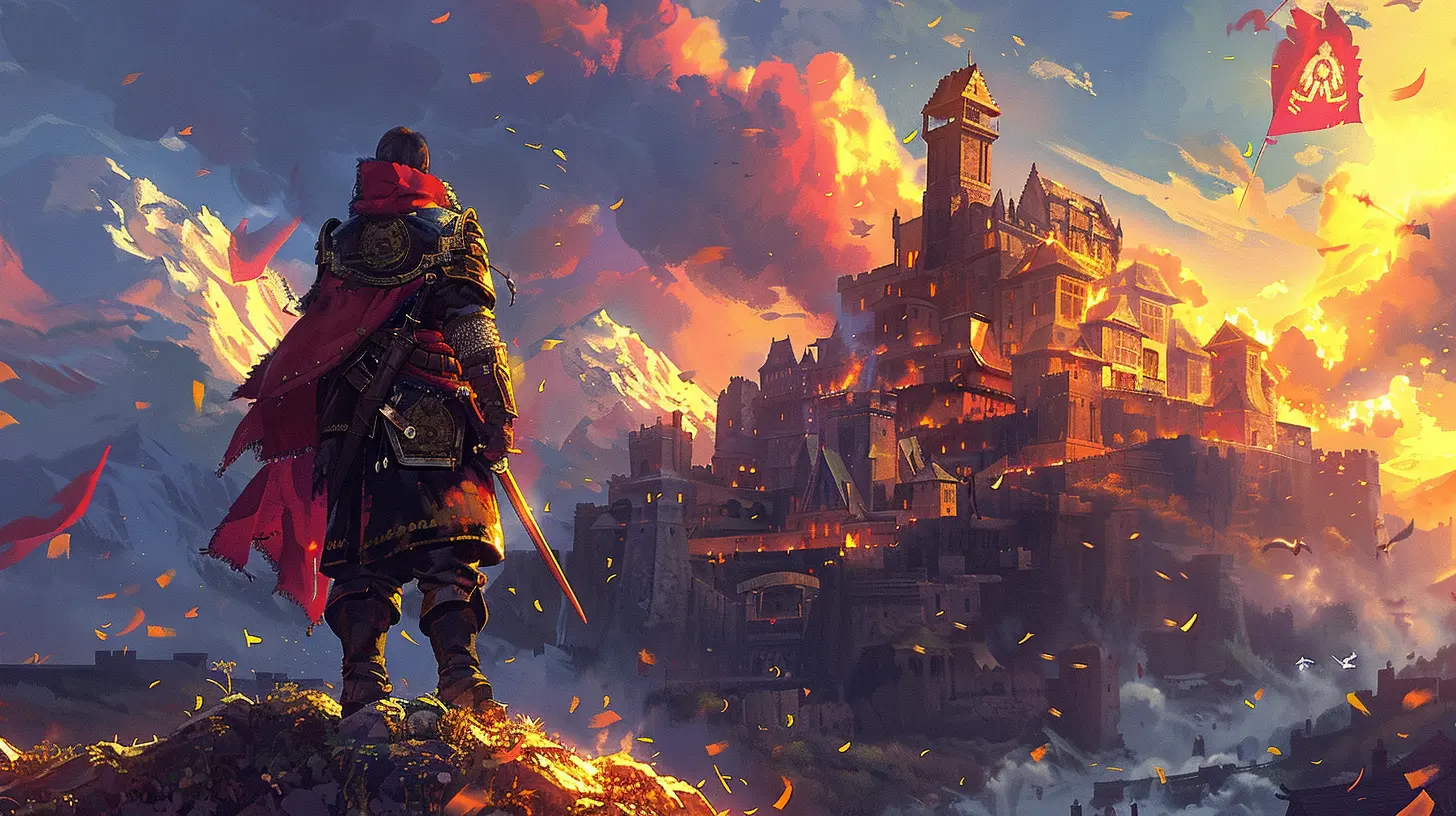15 April 2025
Imagine diving headfirst into a thrilling new online game. The graphics are top-tier, the gameplay feels smooth, and then—bam—you're hooked. You spend hours leveling up and honing your skills, and just when you're about to achieve greatness, another player storms past you with gear so shiny it practically blinds you. You later discover they unlocked all that premium loot not through skill or time, but by swiping their credit card. Welcome to the world of "Free to Play, But Pay to Win" gaming.
This phrase has been sparking debates for years. Is it fair? Does it ruin gaming? Or, is it simply the cost of keeping a free game alive in today’s competitive market? Let’s dive into the nitty-gritty, shall we? We'll explore what "free-to-play" really means, break down the mechanics behind "pay-to-win," and try to make sense of the fine line between engaging gameplay and aggressive monetization.
What Does "Free to Play" Really Mean?
"Free to play" (or F2P) games are everywhere. These are your mobile games, MMORPGs, and even some big-name shooters. The idea is simple: You can download and play the game for free—no upfront costs required. Sounds great, right? Who doesn’t love free stuff?But here’s the kicker. Behind every F2P title is a developer or studio that, understandably, wants to pay its bills. Game servers, maintenance, updates, marketing—it all costs serious money. So how do they get paid? That's where monetization steps in, often in the form of in-game purchases. Cosmetic skins? Sure. Extra power-ups? Why not. Loot boxes? Oh, you better believe it.
F2P games are essentially offering you a taste of their product, like a free sample at a grocery store. If you enjoy it, they’re banking on you spending a little cash to enhance your experience. But when does this enhancement turn into something else entirely?
What Is "Pay to Win"?
The term "pay to win" (P2W) is exactly what it sounds like. It's when spending real money gives some players a significant advantage over others. Instead of earning rewards through gameplay, you can simply buy them. This might include better weapons, faster progression, exclusive abilities, or even immunity to certain gameplay mechanics.Let’s break it down with a metaphor. Imagine you're running a marathon. Everyone starts on equal footing, but midway through, some runners whip out jetpacks they bought with cash. Sure, you're still technically in the race, but are you really competing fairly?
This uneven playing field is where the controversy lies. For players who don’t—or can’t—spend money, the game can feel punishing, like they’re stuck in quicksand while others soar effortlessly ahead. And that’s the kind of gaming experience that can lead people to rage-quit faster than you can say “microtransaction.”
Why Developers Embrace Pay-to-Win Models
Okay, before we grab our pitchforks, let’s try to understand things from a developer's perspective. Why would they risk upsetting their player base by implementing P2W mechanics? The answer, unsurprisingly, is money.Games are expensive to make. We’re talking millions of dollars. And in a saturated market, even the best games struggle to grab attention. Offering a game for free removes the initial barrier to entry—it gets people through the door. From there, developers need to recoup their investment, and P2W mechanics can be ridiculously profitable.
Think about the "whale" economy. In gaming, whales are players who spend hundreds, even thousands of dollars on in-game purchases. These big spenders can bankroll an entire game, often making up for the many "freeloaders" who play for free. It's a delicate dance: the trick is keeping whales happy without making free players feel like they’re being crushed underfoot.
The Psychological Hooks Behind P2W
Ever wondered why some P2W mechanics are hard to resist? It’s not just about the shiny rewards; it’s about how our minds work. Many games use psychological tricks to nudge players toward spending.1. FOMO (Fear of Missing Out)
Limited-time offers, exclusive skins, or seasonal events—these are classic FOMO tactics. If you don’t buy that special bundle now, you may never have the chance again. It's like missing out on a party everyone else is raving about.2. The "Sunk Cost Fallacy"
This one’s sneaky. If you’ve already spent hours grinding or even paid for a small upgrade, it feels like wasting all that effort if you don’t keep going. You’ve invested, so why stop now? Spoiler: That’s exactly what they want you to think.3. Social Pressure
In multiplayer games, seeing other players flaunt their premium gear can trigger a sense of inadequacy. Nobody wants to feel like the underdog all the time. Buying that shiny armor or powerful weapon becomes a way to "fit in.”Striking the Balance: When Does It Become Too Much?
Not all F2P games are created equal. Some have found the sweet spot between free and paid content, while others cross the line. So, how do we determine what’s fair?Good F2P Games Respect Skill
Games like "Fortnite" are often praised for their balance. Sure, you can spend money on cool skins and emotes, but they don’t impact gameplay. A skilled free player can still dominate if they know what they’re doing. That’s how it should be—money buys cosmetics, not victories.Bad F2P Games Gate Progression
On the flip side, some games practically hold players hostage. Want to progress faster or unlock a key feature? That’ll cost you. These are the games that make you wonder if you’re actually playing or just paying.Finding the Middle Ground
The best games let players spend money to enhance their enjoyment without alienating the core experience. Maybe you grab a cosmetic skin for your character because you like the way it looks, not because it gives you a damage boost. By keeping paid content optional and non-competitive, developers can foster a healthy player base while still keeping the lights on.How Can Players Navigate F2P and P2W?
Here’s the good news: As a player, you’re not powerless. In fact, you have more control than you might think.1. Set a Budget
If you want to spend money, decide upfront how much you're willing to drop. Treat it like going to the movies or buying a coffee—set limits so you don’t accidentally splurge.2. Support Ethical Developers
Show your love for games that respect players. Spend your money on developers who avoid shady tactics and offer well-crafted content instead of blatant paywalls.3. Call Out Unfair Practices
Gamers have a louder voice than ever. Use social media, forums, and reviews to call out games with predatory P2W mechanics. If enough people speak up, developers may take notice.The Future of Free-to-Play Games
As technology evolves, so does the gaming industry. The F2P model isn’t going anywhere, but developers are becoming savvier about balancing free and paid content. Players demand quality, and the games that thrive will be the ones that respect their time and wallet.Subscription models and battle passes are becoming more common, offering a middle ground. Instead of buying power, players pay for seasonal content or steady progression. If done right, these systems could signal a shift away from blatant P2W mechanics.
But at the end of the day, the "F2P but P2W" debate boils down to one thing: choice. As long as players retain the option to succeed through skill and effort—rather than sheer financial power—gaming can remain the fun, challenging, and rewarding hobby we all know and love.
Final Thoughts: Can Free-to-Play and Pay-to-Win Coexist?
The short answer? It depends. When done responsibly, F2P games can coexist with optional paid content, creating a win-win situation for both players and developers. But when games lean too heavily on P2W mechanics, they risk alienating their audience and undermining the joy of fair competition.So, the next time you download a F2P game, ask yourself this: Are you playing for fun, or are you paying to win? The answer might just shape how you approach the gaming world moving forward.




Bennett Griffin
The article astutely highlights the tension between accessibility and fairness in free-to-play models. While monetization is essential for developers, the risk of pay-to-win dynamics undermines player trust and engagement. A balanced approach is crucial for sustainable gaming ecosystems that prioritize both profit and player experience.
April 15, 2025 at 2:41 PM